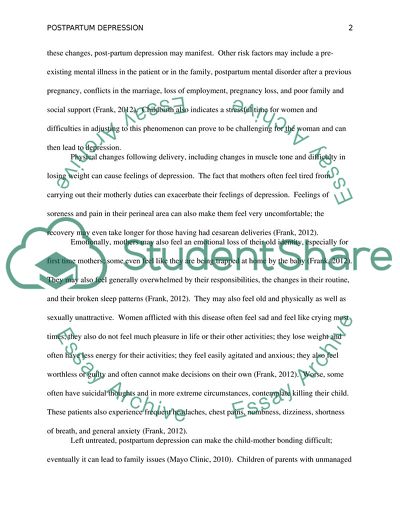Post Partum Depression Research Paper Example | Topics and Well Written Essays - 750 words - 1. https://studentshare.org/medical-science/1774517-postpartum-depression-and-how-to-deal-with-it
Post Partum Depression Research Paper Example | Topics and Well Written Essays - 750 Words - 1. https://studentshare.org/medical-science/1774517-postpartum-depression-and-how-to-deal-with-it.


